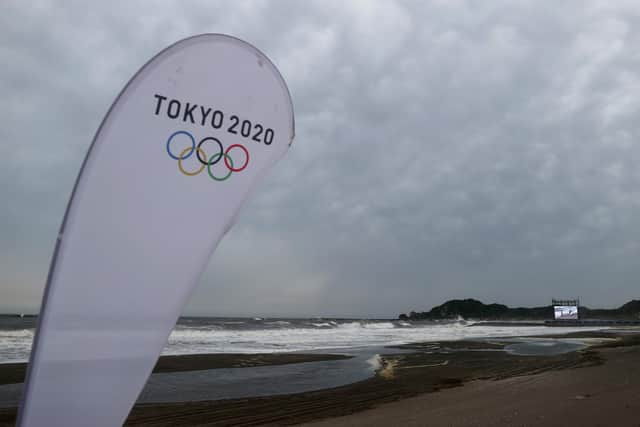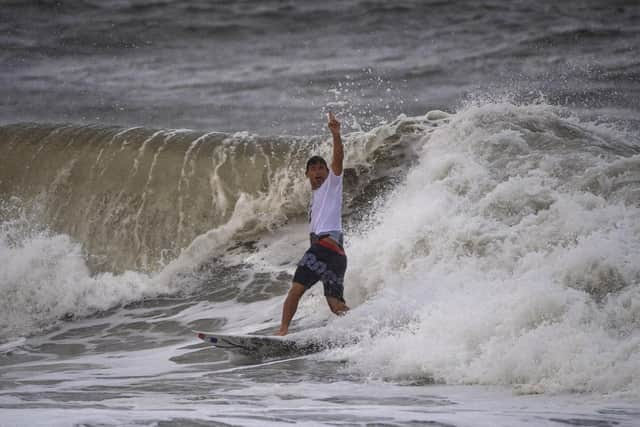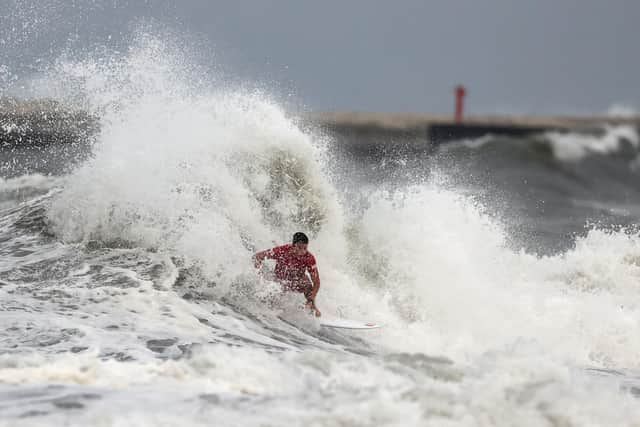Tokyo 2020: How does Surfing scoring work in the 2021 Olympics?
and live on Freeview channel 276
Tokyo 2020 will see the first ever Olympic Surfing event take place, with 20 women and 20 men competing for gold on the water.
The sport is one of four new additions to the Tokyo 2020 Olympics, with the International Olympic Committee (IOC) hoping they will attract a younger audience to the Games.
Advertisement
Hide AdAdvertisement
Hide AdThe sport is similar to gymnastics, with a panel of judges giving athletes scores based on a set list of criteria.


To stop you getting confused whilst watching the coverage, here is a complete guide on how the surfing scoring system works at the Olympics, and some of the useful phrases you may here during the competition.
How does scoring in Olympic Surfing work?
A five person judging panel scores the event using a scale from 0.1 to 10.0.
Surfers compete in heats. Each heat lasts approximately 30-minutes depending on the weather conditions.


Advertisement
Hide AdAdvertisement
Hide AdEach surfer will be required to catch as many waves as possible, and only a surfer's top two-highest scoring waves are combined for their final overall points total.
The wave score is then calculated by discarding the highest and lowest judges scores. The surfer is then given an average using the three middle scores.
It's not about how many waves one surfer can catch, but rather the combined total of their highest two scores. Wave selection can be crucial, especially given the unpredictable nature of waves and the ocean.
The surfers heat total is calculated by adding the two best scoring waves. This is out of 20 points, with a 10 point ride being the perfect score.


Advertisement
Hide AdAdvertisement
Hide AdThe scoring system is based on five criteria that reflect the core elements of the sport. These are:
1. Commitment and degree of difficulty
This is based on the types of movements that an athlete performs and how difficult the moves are to perform. Athletes are rewarded for higher risk manoeuvres. The judges will also look at how committed a surfer is to maximising the waves potential.
2. Innovative and progressive manoeuvre
The judges will look at whether the surfer is pushing the boundaries are doing innovative maneuvers such as aerials and tail slides.
3. Variety of manoeuvres
Judges will examine whether the athlete is doing a variety of manoeuvres or similar manoeuvres repetitively.
4. Combination of major manoeuvres
Advertisement
Hide AdAdvertisement
Hide AdThis category focuses on how well a surfer connects big higher scoring manoeuvres together.
5. Speed, power, and flow
The judges will be looking at how fast the surfer is going on a wave, but also how quickly they are adapting to the speed of the wave. Judges will look if athletes are surfing with proper speed to achieve critical manoeuvres.
Flow looks at the way in which a surfer seamlessly connects their moves from one to next. Finally, the judges will look at how much power an athlete is pushing into their manoeuvres.
How does the Olympic Surfing format work?
The surfing competition begins on Saturday 24 July at 11pm BST.
Advertisement
Hide AdAdvertisement
Hide AdThe whole event will then be completed within a specific timeframe, however, the competition will be paused and adapted if the weather worsens.
Those looking to be crowned Olympic Champion will need to progress through six rounds. The rounds are:
Round 1
20 surfers - Non-elimination. Five heats with four surfers in each heat. The top two go straight to round 3. The bottom two go to round 2.
Round 2
10 surfers - The second round is a repechage round and has two heats, with five surfers in each heat. The bottom two surfers are eliminated
Round 3
Advertisement
Hide AdAdvertisement
Hide Ad16 surfers - Surfers are seeded into eight heats with two surfers each. The surfer who wins the heat advances, the other is eliminated.
Quarterfinals
8 surfers - Four heats with two surfers. The top surfer of each heat advances, the other is eliminated.
Semifinals
4 surfers - Two heats with just two surfers. The two that win advance to the final, while the other two will go to the Bronze heat and compete for the bronze medal.
Gold final
Two-person heat where the winner takes gold and the other wins silver.
Useful surfing terms to know before watching
Advertisement
Hide AdAdvertisement
Hide AdLike most extreme sports, surfing contains several words and phrases that will be new to viewers.
Here is a list of words that you will hear throughout the Olympic Surfing event.
Going Ariel
This will be said when the surfer goes airborne. This will happen with the athlete launches themselves and their board out of the water, into the air, and over the top of the wave. They will then land back down into the same wave.
Beach Break
These are waves created by a shallow sandy ocean floor.
Choppy
This refers to rough and bumpy wave conditions often caused by strong winds and ocean currents.
Clean
Advertisement
Hide AdAdvertisement
Hide AdThis refers to Ideal surfing conditions. The waves have power and are smooth with a glassy surface. Offshore winds that blow toward the ocean usually create these groomed conditions.
Cutback
This is a typical surfing move for changing direction and making a strong turn back towards where the wave is breaking. Surfers will do cutbacks to get themselves closer to the power of the wave.
Fin
This is similar to a rudder on a boat. Fins are found on the bottom of the board to help the surfer to have stability, direction, and drive.
Comment Guidelines
National World encourages reader discussion on our stories. User feedback, insights and back-and-forth exchanges add a rich layer of context to reporting. Please review our Community Guidelines before commenting.
